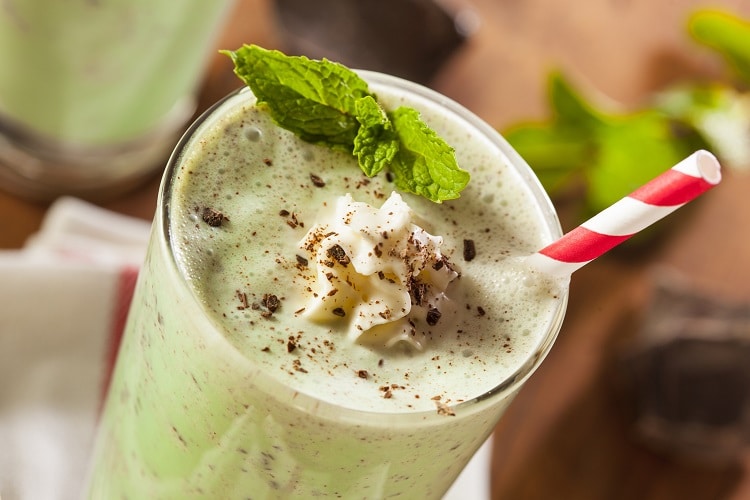Great dishes start with the ingredients that go into them. Of course, technique, knowledge, practice and a good palate can really bring a grocery bag full of veggies to equal a sum greater than its parts. However, in my opinion, it is impossible to make truly wonderful food without wonderful ingredients.
Great restaurants know this, and your favorite chefs seek these ingredients out. This idea goes further than shopping at the local farmers market, or picking up a carton of farm-fresh eggs; and although both of these are good habits to make, there are simpler tools to add to the pantry that can transform the average to extraordinary. Here are five ingredients your favorite chefs—including myself—use in their kitchens every day.
Salt
Salt is, in its own right, the king of the pantry. All of the flavors on a plate, from the bold to the subtle, depend on the correct amount of seasoning to bring out those precious notes that teeter on your tongue. Whether they transport you to a far-away land or a childhood memory, the flavor profiles that string a dish together in perfect harmony are only brought to fruition through the application of salt. In the kitchen, chefs reach for the kosher variety. Iodized salt tends to lay flat on the surface, while its counterpart permeates the food. Both coarse and finer-ground versions are adequate. Finishing salts add to the dynamic of a dish as well. Most-commonly found are Maldon and the French Fleur de sel. More recently, other varieties such as gray, Hawaiian and Himalayan have become popular. Apply these after the dish has finished cooking, and use in sparse amounts. The correct application of salt is paramount in building a tasty meal.
Butter
In Western cuisine, a style highly influenced by classic French technique, butter may be the single-most important ingredient in your fridge. Quality butter lends all one needs to complement a piece of brioche or challah. It is important that the cook controls as much as he/she can, so get rid of the salted butter. Unsalted brands help the cook not over-season a dish while adding richness. Also recommended, but not fully necessary, is Plugra butter. Plugra is marketed as European-style butter, and it has an 82% butterfat content. It is wonderfully smooth and has an amazing ability to round out pan sauces and butter-basted proteins. Plugra sits on the shelf next to your other commodity brands at most grocery stores.
Oil
There are myriad oils out there with which to cook. Although olive oil has long stood as the hallmark of a knowledgeable cook, there are better alternatives to be used depending on the application. Extra virgin olive oil has a pungent aroma and nutty flavor, but those factors can destroy a dish when heat is applied. Save the EVOO for finishing salads and in applications where the oil is not under duress of a flame. Opt for oils that are neutral in flavor, and have a higher smoke point. Pomace olive oil or a 90%/10% blend of soybean and olive are commonly found in commercial kitchens. Grape seed oil is rising in popularity because of its ability to hold its integrity well even at temperatures nearing 400. If you’re looking for deep-frying oils, peanut, soy and canola are your best options. Restaurants most often use a blend or shortening in their industrial fryers. Specialty or infused oils share the like with extra virgin olive oil, and should only be used to finish a dish; and, if hot, only after the dish has been removed from heat.
Pepper
It is an argument that pepper may not even be necessary as a staple in the kitchen, but American palates have learned to love it just the same. Black pepper, specifically, can be increased in value by following a few basic rules. When ground fresh, black pepper releases an intoxicating aroma that travels right through to the palate. Using a pepper mill in place of table grind pepper can enhance the umami, or savory factor, of red meats and hearty stews. Crack the pepper coarse and avoid the problem of over-seasoning. Some kitchens choose a peppercorn mélange, a mix of black, pink and white pepper. All of these are stages in which the pepper grows from the plant, and can lend their own unique flavor.
Cream, Milk and Buttermilk
Dairy products in multiple forms and stages can contribute a wonderful richness to a dish. When cream is involved, grab the highest fat content you can find. Cream can usually be found in 36% and 40%, with the higher of the two usually labeled as heavy or whipping cream. Milk follows the same rule, and regardless of preference for drinking, whole milk adds the most flavor and depth when cooking. Buttermilk is a great pantry addition for dressings and baking. Cultured versions can be bought that are shelf stable and ultra-pasteurized. Another option is making your own sweet-cream buttermilk. Fresh buttermilk has a lower acidity and can brighten a dish without the worry of becoming tart.
Cooking a well-flavored meal does not have to rely on specialty produce or interesting, global flavor combinations. Down-to-earth classics, when made with the right ingredients, can be simple and delicious. Adding a few of these ingredients to your pantry can help make these meals something special, and will be sure to impress your favorite chefs.






One Comment